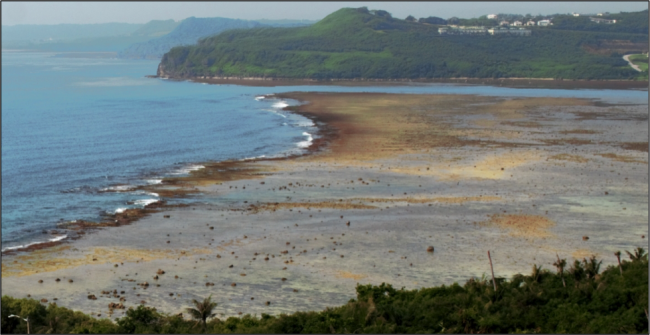El Niño-related sea level extremes to increase with greenhouse warming
During El Niño, warm water and high sea levels shift eastward, leaving in their wake low sea levels in the western Pacific (see picture of exposed reefs in Guam). Scientists have already shown that this east-west seesaw is often followed six months to a year later by a similar north-south sea level seesaw with water levels dropping by up to 30 cm in the Southern Hemisphere. Such sea level drops expose shallow marine ecosystems in the Pacific Islands, causing massive coral die-offs with a foul smelling tide, called taimasa (pronounced [kai’ma’sa]) by Samoans.

Widlansky et al. recently asked, how will future greenhouse warming affect the El Niño sea level seesaws? Using CMIP5 simulations prescribed with historical greenhouse gas concentrations and future projections (representative concentration pathway 8.5), together with the ECMWF (European Centre for Medium-Range Weather Forecast) operational ocean reanalysis of the observed climate and tide-gauge records to verify the model results, the authors found that projected climate change will enhance El Niño-related sea level extremes. By the end of this century the projections show that the intensified wind impacts of strong El Niño and La Niña events are likely to double the frequency of extreme sea level occurrences, especially in the tropical southwestern Pacific. The results are consistent with previous findings that showed the atmospheric effects of both El Niño and La Niña are likely to become stronger and more common in a future warmer climate.
The trend in greater sea level variability means that many Pacific Island communities should expect not only more frequent and prolonged drops in sea level, but also more frequent high sea level events. This will further increase the risk of coastal inundations as sea levels gradually rise stemming from warming oceans and melting ice caps.
Future extreme sea level seesaws in the tropical Pacific (Science Advances)
1 University of Hawai’i at Mānoa
2Commonwealth Scientific and Industrial Research Organisation (CSIRO) Oceans and Atmosphere Flagship, Australia
Topics
- Sea Level Rise
- Pacific Ocean
- Climate Change
- ENSO
- Extreme Events
